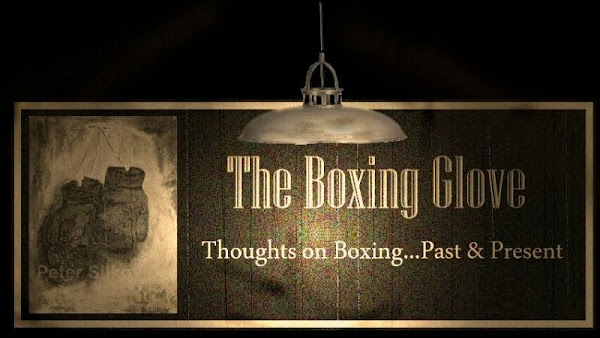The Boxing Glove Sunday Night Book Review by Peter Silkov
In This Corner: Forty World Champions Tell Their Stories.
Written by Peter Heller
This week at The Boxing Glove, we are reviewing a book, which originally came out in 1973, but is still available either new or second hand.
In This Corner: Forty World Champions Tell Their Stories.
Written by Peter Heller
This week at The Boxing Glove, we are reviewing a book, which originally came out in 1973, but is still available either new or second hand.
 |
| Pete Herman |
From early 1970 to late 1972, Peter Heller traveled up and down America with a tape recorder, interviewing over forty former world boxing champions, going back to the 1910s. The result is a fascinating insight into the lives of these fighters, who at one point were the best in the world at their weight, back in the days when a world champion really was a world champion.
The book is sectioned off by decades, with varying amount of fighters representing each decade. From 1910 to 1920, then the 20s, 30s, 40s, 50s, and 60s.
The book is sectioned off by decades, with varying amount of fighters representing each decade. From 1910 to 1920, then the 20s, 30s, 40s, 50s, and 60s.
Part of the charm of this book is that most of the fighters interviewed for it have since passed on, so this is in many ways a rare and precious recording of these men in conversation, talking about not just their boxing careers, but their lives, and experiences outside of the ring. There are many social insights within these pages, though so much has changed in many ways, interestingly much has remained the same. For instance, the question of racism and prejudice comes up numerous times in this book, and we need only to look around us today and see that many of these problems are still with us today.
 |
| Jack Dempsey |
The fighters interviewed in this book rage from legendary figures such as Jack Dempsey, Joe Louis, Henry Armstrong, Willie Pep, and Sugar Ray Robinson, to those not so widely known, especially today, men like Gunboat Smith, Charley Phil Rosenberg, and Pete Herman.
Even though many of the fighters who appear in this book have been written about many times and even published their own autobiographies, many of them were never interviewed in a one-on-one situation before this book. The result is that the ex-fighters often seem to come out with memories and feelings, which they had never expressed publicly before. In his interview, for instance, Jack Dempsey says about the great Sam Langford “even at my best I don’t know whether I could lick him or not."
Even though many of the fighters who appear in this book have been written about many times and even published their own autobiographies, many of them were never interviewed in a one-on-one situation before this book. The result is that the ex-fighters often seem to come out with memories and feelings, which they had never expressed publicly before. In his interview, for instance, Jack Dempsey says about the great Sam Langford “even at my best I don’t know whether I could lick him or not."
 |
| Lou Ambers |
Some of the other fighters contained in this book are Willie Richie, Jack Sharkey, Lou Ambers, Jim Braddock, Battling Battalino, Lew Jenkins, Don Jordan, Willie Pep, Sandy Saddler, Billy Conn, Archie Moore, Bobo Olsen, Jake Lamotta, Rocky Graziano, Floyd Patterson, and Emile Griffith, just to name just a few.
This book is really a time capsule of the experiences and feelings of many of the great fighters who fought in the ring when boxing was one of the hardest and most poplar sports in the world. There are many insights into their lives and boxing careers that you cannot find elsewhere. Peter Heller’s gift in putting this book together is that he had the ability to make each of these men relaxed enough with him so that they could confide in him things, which they often had never revealed before in public. Many were also able to look at their careers in a more objective and philosophical light, now that they were years removed away from fighting.
This book is really a time capsule of the experiences and feelings of many of the great fighters who fought in the ring when boxing was one of the hardest and most poplar sports in the world. There are many insights into their lives and boxing careers that you cannot find elsewhere. Peter Heller’s gift in putting this book together is that he had the ability to make each of these men relaxed enough with him so that they could confide in him things, which they often had never revealed before in public. Many were also able to look at their careers in a more objective and philosophical light, now that they were years removed away from fighting.
 |
| Sugar Ray Robinson |
I have had a copy of this book for over 30 years now and still dip into it regularly for quotes or information about some of the fighters that were interviewed. It is that good.
In all, no serious boxing follower can ignore this exceptional book. For those who are interested already in the fighters of the past, this book is invaluable, and for those who may think that the fighters of the past are irrelevant or over hyped, this is the book that will change your mind.
Copyright © 2015 The Boxing Glove, Inc. Peter Silkov Art. All Rights Reserved. Peter Silkov contributes to www.theboxingglove.com and www.theboxingtribune.com

































